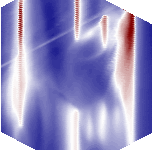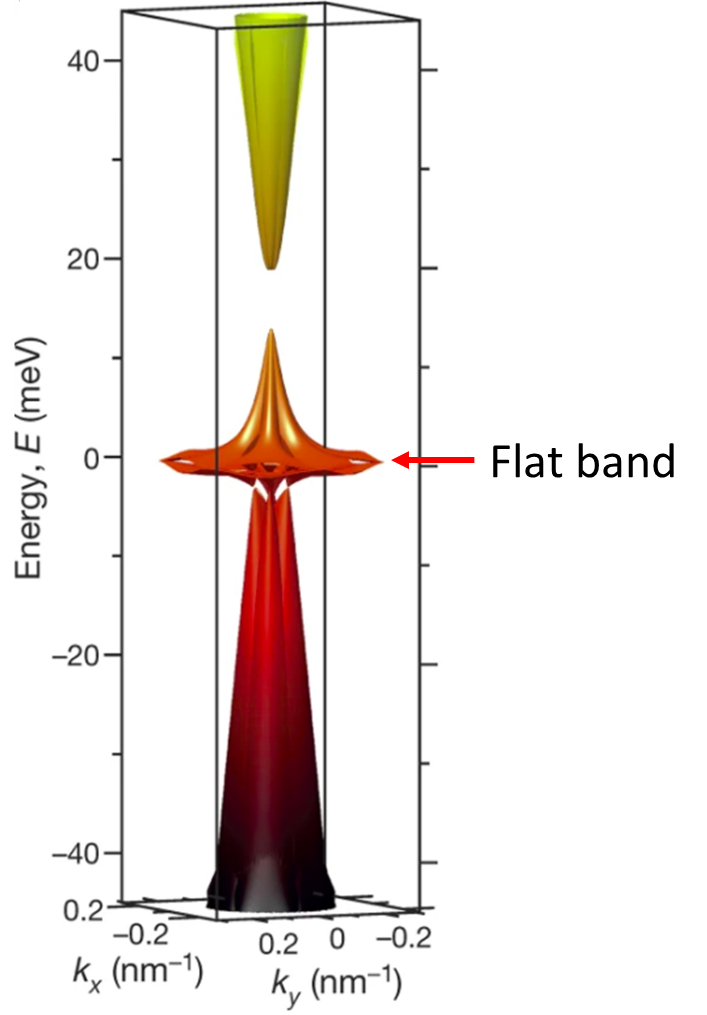

When stacking two layers of graphene together with a twisted angle around 1.1° (so-called magic angle), the interlayer hybridization results in a flat band at low energy as shown in left figure. In a flat band, kinetic energy of electrons is quenched and Coulomb energy can dominate over kinetic energy. Therefore, magic-angle twisted graphene provides a new platform for studying strong correlated physics, as Coulomb interactions play an important role in this system.
As a result, recently many exotic quantum phenomena have been observed in magic-angle twisted graphene, including Mott insulating states [1], unconventional superconductivity [2], ferromagnetism [3], and quantum anomalous Hall effects [4].
In multilayer graphene, the band structure can be easily tuned by external electric fields. By applying such technique to magic-angle twisted monolayer-bilayer graphene, tunable asymmetrical correlated states as shown in the title image can be observed [5].
References:
[1]. Y. Cao, et. al., “Correlated insulator behavior at half-filling in magic-angle graphene superlattices”, Nature, 556, 43-50, (2018).
[2]. Y. Cao, et. al., “Unconventional superconductivity in magic-angle graphene superlattices”, Nature, 556, 80-84, (2018).
[3]. A. L. Sharpe, et. al., “Emergent ferromagnetism near three-quarters filling in twisted bilayer graphene”, Science, 365(6453), 605-608, (2019).
[4]. M. Serlin, et. al., “Intrinsic quantized anomalous Hall effect in a moire heterostructure”, Science, 367(6480), 900-903, (2020).
[5]. S.G. Xu, et. al., “Tunable van Hove singularities and correlated states in twisted monolayer-bilayer graphene”, Nature Physics, https://doi.org/10.1038/s41567-021-01172-9, (2021).